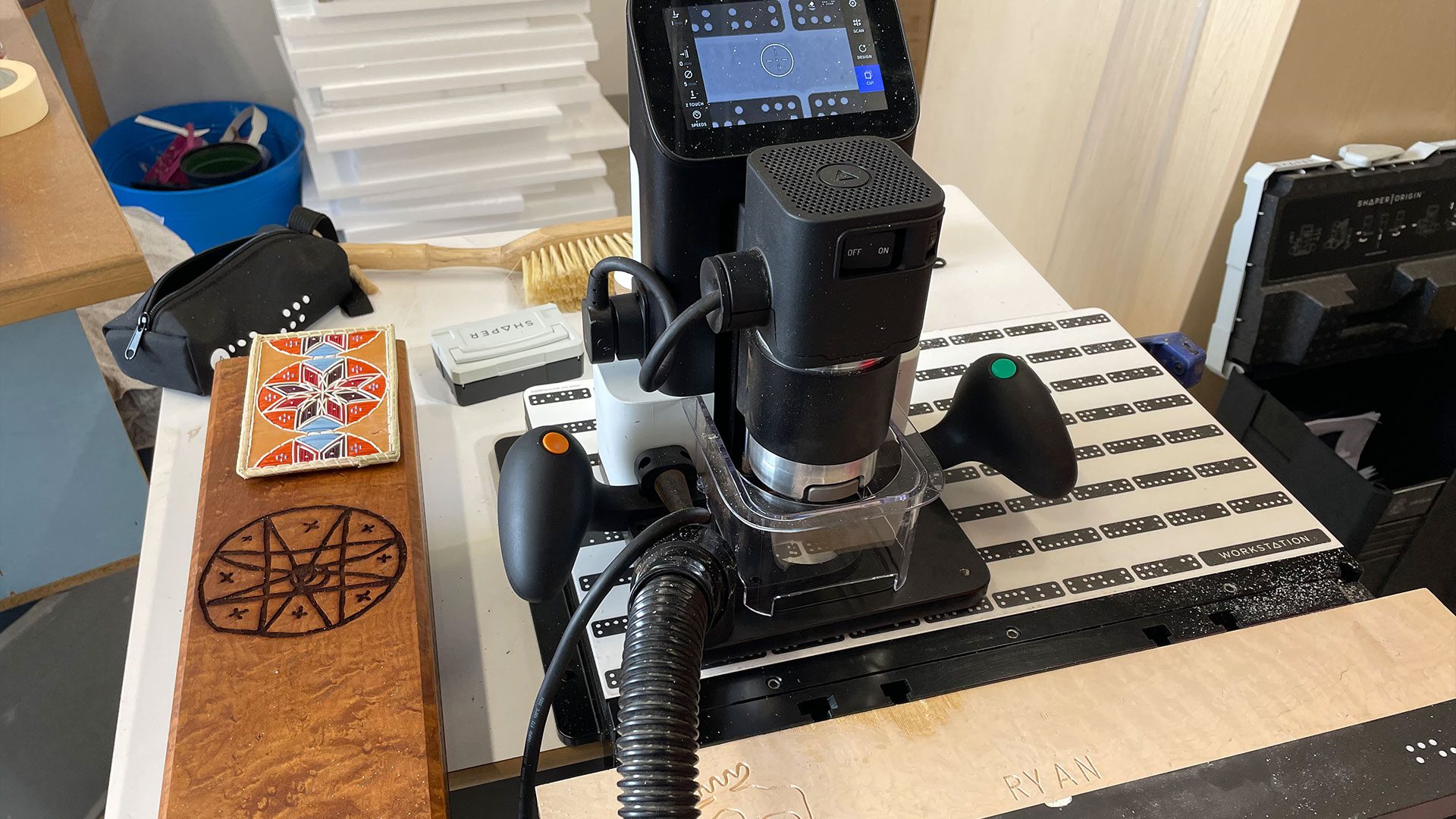The Alaqsite’w Gitpu School (AGS) in Listuguj First Nation, Que. is bringing together traditional knowledge with cutting-edge technology in its new curriculum.
Johnathan Barnaby was a construction worker in Listuguj for 20 years. Travis Barnaby was a bus driver. Now they’re outdoor educators at AGS.
“I really enjoy coming to work every day and doing these kinds of things with the students and working with pretty excellent staff,” said Johnathan.
“This is where my parents, my whole family, taught me about outdoors. So anytime that I’m outdoors, to show the kids, to show anybody, it’s a pretty wild blessing for me,” added Travis.
The school’s outdoor education program is only a few years old, but the knowledge and skills the two Barnabys are passing on date back centuries.
Students learn a variety of traditional Mi’gmaq skills from tapping maple trees, to snowshoeing, to making drums.
“You name it, we’ve tried it. Anything that’s happening in our community, we’re trying to bring it into the classroom, trying to find a way to share that knowledge and to feel comfortable and confident in where they come from and their Migmaq identities,” said Johnathan.

AGS only goes up to Grade 8, but the school offers summer sessions for Listuguj residents who didn’t get the chance to participate in the program growing up – like Amelie Rioux, Dahlia Methot and Peyton Isaac, who just graduated from high school.
“When I was a kid, we didn’t have any of this, and I’ve never shot an arrow, and I’ve never made a fire, and I’m 18, so I think it’s good for kids to learn. Especially my sister, she did it last year,” said Rioux, who will be leaving her home community to attend university in Prince Edward Island this fall.
“I think it’s important that people, like we, learn about what they had to do back in the day considering it was kind of taken from us, like in the residential school and everything,” said Dalhia, who will be attending Concordia University in Montreal.
“[The program is] growing now; we got Parker with us, so it’s all the technology. So we have both of best worlds, I think, cause technology, and we have the outdoors,” said Travis.
Ryan Parker is the STEAM (Science, Technology, Engineering, Arts, Math) educator for AGS. He’s originally from Listuguj’s neighbouring community of Campbelton, N.B., but has been with AGS for 11 years, so he’s seen how the school has evolved.
AGS started the STEAM program last year. The program is designed to let students experiment with technology in a creative way. AGS’s lab and workshop are equipped with 3D printers, laser cutters, drones, a sound booth, and more.
“Really, what we’re trying to do here is give them an opportunity to be, to try something new, and if they like it and they’re passionate about it, to dig a little bit deeper, and it’s hands on and these are transferable skills,” said Parker.

Johnathan Barnaby demonstrates how to start a fire
The program is funded by the school, but Parker says it is looking to increase its own revenue source by selling earrings and featherboxes made with the equipment.
Parker works closely with the Mi’gmaq outdoor educators so the students can integrate technology with traditional teachings.
“We work in a team to show that Two-Eyed Seeing. Like we’re trying to blend both worlds because our students are going to have to walk in two worlds, right?” said Parker.
They design traditional objects like feather boxes with laser cutters, carve initials into Mi’gmaq archery bows and are even able to 3D print tools for the outdoor education class.
“The outdoor educator was doing his maple syrup educator and tapping trees, he didn’t have enough taps for the trees, so we got some students to design taps, so 3D-print the taps, and see what would work,” said Parker.
“Really, that’s what we want. That thinking is cross-curricular, but that design thinking is what we want our students to do. We want them to try something, and if it fails or doesn’t work, we want them to try again,” he said.
That trial-and-error approach is also used in outdoor ed and students feel that they’re taking part in Mi’gmaq culture by “just keeping everything alive, keep showing other people, so you can keep building off other generations to other generations,” said Peyton Isaac.










